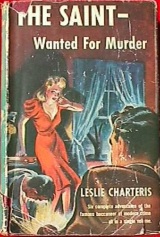Ring a Ding Ding
Turner Classic Movies has devoted Tuesdays in March to Jean Harlow, and I have been diligently recording them to further explore whom I think of as THE platinum blonde. Harlow was the epitome of sex appeal in the 1930s. Her suggestive roles always seemed emphasized by the slinky gowns she wore, shoulders hunched forward, that hung as though they would slip off her shoulder at any moment. Harlow and Clark Gable were repeatedly paired together in the ’30s, and one can understand why. His brutal sexuality and her unflinching sass made them perfect contenders. Hold Your Man was released a year after the well-known Red Dust had Harlow splashing around in a water barrel bathing while Gable chastised her. It was after Hold Your Man in which Gable stumbles upon a bubble bath-submerged Harlow, however, that the blonde officially had enough box office clout to star in films without a famous sidekick like Gable.
Gable’s Eddie first meets Harlow’s Ruby in that bath when, while running from the cops, he ducks into her apartment to hide out. Comically, when the police demand to search the place, Eddie disguises himself in the now-vacant bath by covering his face in suds and playing husband to Ruby. Eddie is a con man —not an unfamiliar role for Gable— and Ruby is a gal who gets by on the favors of her boyfriends, the pictures of several she keeps on her bureau. Eddie immediately puts the moves on Ruby, but she is not swayed. They next meet when Ruby with her boyfriend is spotted by the leading man at a club (Turns out Ruby has been dining there for weeks knowing it is a regular hang out of Eddie’s.). Ruby kindly ditches the boyfriend and later heads to Eddie’s where after insisting she wants no tour of his bedroom, ultimately spends the night.
Ruby, Eddie and pal Slim (Garry Owen) try to pull a scam on a drunken man who will be enticed to get handsy with Ruby in time for Eddie to charge in, claiming to be her brother, and demand restitution. The trouble is, Eddie jumps the gun because he cannot stand the notion of another man messing with his girl, socks the guy, who falls cold out the door. Eddie’s now-apparent feelings for Ruby lead the duo to head out for a marriage license, but when they return to the apartment building, they learn the man Eddie hit is dead. The cops nab Ruby, but Eddie gets away. The remainder of the film takes place in the women’s reformatory where Ruby finds herself in a family way.
Gable’s characters were typically the gruff man’s man sort, but he always got his woman (or rejected her). What I found delightfully different about Hold Your Man is the amount of soft emotion he brought to the role. Gable’s characters were not typically the marrying sort, but it is believable in Eddie. Toward the end of the picture we get a fantastically sensitive plea from Gable as he implores a pastor to secretly marry he and Ruby within the prison. Harlow, too, brings a great amount of sensitivity to her role, but that was less a rarity with her. Her characters, despite being typically tough women who could care for themselves, always had emotional moments. Hold Your Man is quite a gem among both actors’ work.
Filed under: Drama, Romance | Tagged: Clark Gable, Gary Owen, Jean Harlow, Ring a Ding Ding, Sam Wood |












One intriguing angle regarding “Hold Your Man” is that two different versions were filmed — one with footage featuring a black preacher, the other where the preacher was white. The latter was sent to southern markets, since MGM believed white southerners would not accept having a black man marrying white characters. (I’m not certain if the southern version’s footage still exists.)
What’s also worth noting (though Robert Osborne has never mentioned it the two times I’ve seen him introduce this film) is that the white preacher is portrayed by veteran character actor Henry B. Walthall — the same man who played Ben Cameron, “the little colonel” in “The Birth Of A Nation.”
For more on this, check out an entry I wrote in 2009: http://community.livejournal.com/carole_and_co/174666.html
I do recall hearing RO mention that after the movie and it’s some cool trivia. I’m glad the studio at least offered the black pastor version instead of taking the easy way out and just using a white guy. I found that character to make the whole scene that much more touching and sensitive.